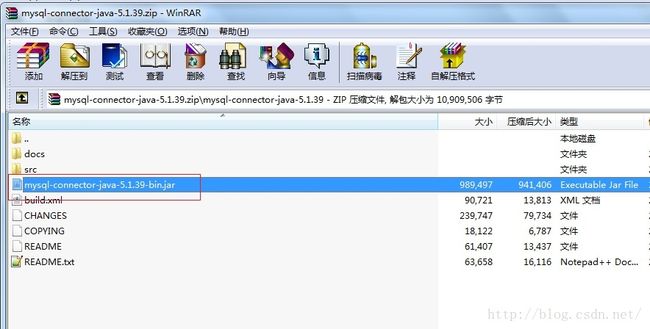- 最详细的解决方法:MySQL服务无法启动。服务没有报告任何错误。端口问题,配置问题。
掉色的熊猫
BUGMySQL新手数据库mysqlbug系统安装windows
如图,启动mysql服务时,报这个错误了应该怎么办?往下看。我知道会报这个错误的两个原因:(1)端口号被占用。1.打开CMD,命令提示符。2.输入netstat-ano,则跳出下图所示,找对对应3306的端口。3.继续输入tasklist|findstr端口号对应的PID号,由于上图可知我的pid号为1564。然后就可以看见,是mysql占用了我的mysql端口号。好像有那里不对啊,哈哈哈,好吧,
- mysql数据库底层逻辑
一、数据加载在MySQL中,数据持久化存储在磁盘上,但为了高效访问,MySQL会智能地将数据加载到内存中。Mysql在内存中构建缓冲池,当查询需要访问数据时,MySQL首先检查缓冲池,若数据不在缓冲池:1.从磁盘读取目标页(16KB单位)2.将页加载到缓冲池的空闲页(FreeList)3.将页添加到LRUList的OldSublist头部(LRU分为两个区域:NewSublist(5/8):最近频
- Django基础(七)———模型常用Field以及Meta配置
前言上篇文章给大家介绍类Django和MySQL数据库的综合使用,以及框架中的ORM模型。这篇文章将继续讲述ORM模型当中常用的Field以及Meta配置一、模型常用Field在Django中,定义了一些Field来与数据库表中的字段类型来进行映射。以下将介绍那些常用的字段类型。1.AutoField映射到数据库中是int类型,可以有自动增长的特性。一般不需要使用这个类型,如果不指定主键,那么模型
- mysql索引和查询优化
Itzel_yuki
mysqlmysql索引mysql查询优化高性能mysql总结
BTree索引:1、对于组合索引,如果查询中有某个列是范围查询,则其右边所有列都无法使用索引优化查询2、高性能索引,索引的列不能是表达式的一部分,也不能是函数的参数。应该养成简化where查询的习惯,始终将索引列单独放在符号的一侧。3、前缀索引和索引的选择性:在创建前缀索引时,选择选择性更丰富的前缀长度。4、mysql无法使用前缀索引做orderBy和groupby,也无法使用前缀索引做覆盖扫描。
- 批量插入技巧:减少事务提交次数的性能提升
一、事务提交成本分析每次事务提交触发磁盘I/O同步(WAL机制)、日志写入和锁资源释放操作,高频独立提交会产生指数级开销。实验表明:MySQL提交1万次单条插入比单次批量插入慢20倍以上。高频提交还加剧锁竞争与死锁风险,导致事务队列膨胀。二、核心优化方案合并事务提交关闭自动提交(autocommit=0),单事务内完成批量操作后统一COMMIT,减少日志刷盘次数。示例代
- 重塑未来:AI如何重新定义全栈开发
熊猫钓鱼>_>
人工智能
在传统认知中,全栈开发者被誉为技术界的“全能选手”。——他们需要精通前端界面构建(HTML/CSS/JavaScript)、后端业务逻辑实现(Python/Java/Node.js)、数据库设计优化(MySQL/MongoDB)以及服务器部署运维(Linux/Docker)。这种“一人包打天下”的能力模型长期被视为高效开发的黄金标准,尤其受到创业公司和小型团队的青睐,因为它能大幅减少沟通成本,加速
- Mysql 事务
乔治大叔
为什么要有事务?事务广泛的运用于订单系统、银行系统等多种场景。如果有以下一个场景:A用户和B用户是银行的储户。现在A要给B转账500元。那么需要做以下几件事:检查A的账户余额>500元;A账户扣除500元;B账户增加500元;正常的流程走下来,A账户扣了500,B账户加了500,皆大欢喜。那如果A账户扣了钱之后,系统出故障了呢?A白白损失了500,而B也没有收到本该属于他的500。以上的案例中,隐
- 了解B/S架构
Ashman.se
计算机语言架构
一.B/S的概念B/S(Brower/Server,浏览器/服务器)模式又称B/S结构,是Web兴起后的一种网络结构模式。Web浏览器是客户端最主要的应用软件。这种模式统一了客户端,将系统功能实现的核心部分集中到服务器上,简化了系统的开发、维护和使用;客户机上只需要安装一个浏览器,服务器上安装SQLServer,Oracle,MySql等数据库;浏览器通过WebServer同数据库进行数据交互。二
- python-读写mysql(操作mysql数据库)
importpymysqlimportpandasaspdimporttimeonly_time=time.localtime(time.time())time_now=time.strftime('%Y-%m-%d%H:%M:%S',only_time)dt=time.strftime('%Y%m%d',only_time)t=time.time()tt=int(t)parentId=''sta
- python读写mysql
cavin_2017
Python学习
目前用到的连接数据库,主要实现连个功能:1.根据sql查询2.将dataframe数据通过pandas包写入mysql数据库中1.根据sql查询:通常我们通过sql查询mysql中的表,分三步1.连接数据库2.数据查询3.关闭连接,如果需要查询的步骤较多,将查询封装成函数,通过参数传递sql代码会省事很多。##定义连接数据库函数defmy_db(host,user,passwd,db,sql,po
- mysql学习记录7.22
woshishui68892
记录一下在学习mysql时避免忘记的内容。日期计算MySQL提供了一些函数,可用于对日期执行计算,例如,计算年龄或提取部分日期。要确定您的每只宠物几岁,请使用该TIMESTAMPDIFF()功能。它的参数是要表示结果的单位,以及两个日期之间的差值。以下查询为每只宠物显示出生日期,当前日期和年龄(以年为单位)。一个别名(age)是用来制造最终输出列标签更有意义。SELECTname,birth,CU
- mysql+explain怎么看_MySQL学习----explain查看一条sql 的性能
安123
在开发的过程中,对于我们写的sql语句,我们有时候会考虑sql语句的性能,那么explain就是首选。Explain命令在解决数据库性能上是第一推荐使用命令,大部分的性能问题可以通过此命令来简单的解决,Explain可以用来查看SQL语句的执行效果,可以帮助选择更好的索引和优化查询语句,写出更好的优化语句。Explain语法:explainselect…from…[where...]例如:expl
- Navicat 连接不上阿里云服务器中安装的宝塔面板中的Mysql服务器
一只程序熊
阿里云服务器云计算
项目场景:就今天在做宝塔的时候遇到一个新问题,在之前的阿里云服务器中都没有发现过这个问题!特此记录解决方案:本地连接不上云服务器主要是这几个原因:1.云服务器官方的安全组问题(安全组是否放行目标端口)2.云服务器内部的服务端口问题(服务器内部端口是否向外部开放)但是今天我又在云服务器安全组内部发现了一个新的问题:3.云服务器中设置了仅本机访问的ipv6的地址,但是仍然访问不了。可能是因为navic
- 小白带你部署LNMP分布式部署
刘俊涛liu
分布式
目录前言一、概述二、LNMP环境部署三、配置nginx1、yum安装2、编译安装四、安装1、编译安装nginx2、网络源3、稍作优化4、修改配置文件vim/usr/local/nginx/conf/nginx.conf5、书写测试页面五、部署应用前言LNMP平台指的是将Linux、Nginx、MySQL和PHP(或者其他的编程语言,如Python、Perl等)集成在一起的一种Web服务器环境。它是
- MySQL学习----Explain
典孝赢麻崩乐急
mysql学习数据库
使用Explain可以查看sql的性能瓶颈信息,并根据结果进行sql的相关优化。当使用Explain分析SQL查询时,MySQL会返回一个包含多个字段的结果集,每个字段都提供了查询执行计划的重要信息。主要输出字段详解(1)id含义:SELECT标识符作用:表示查询中SELECT子句的执行顺序值说明:id相同:执行顺序从上到下id不同:从大到小执行id为NULL:表示结果集,如UNION结果(2)s
- MySQL入门学习-查询优化.EXPLAIN
在MySQL中,'EXPLAIN'命令用于获取查询执行计划的信息。一、关于'EXPLAIN'的一些常见查询优化方面的特点、使用方法、与其他比较及高级应用:1.特点:-提供查询执行计划的详细信息,帮助了解查询的执行方式。-可以用于优化查询性能,找出潜在的性能问题。-适用于各种类型的查询,包括简单查询和复杂查询。2.使用方法:-在查询语句前添加'EXPLAIN'关键字,例如:'EXPLAINSELEC
- Mysql编译
Neng_Miao
mysqladb数据库
Mysql编译1、编译环境硬件环境:香橙派5aarch64架构软件环境:Ubuntu22.04.3LTS编译版本:mysql-5.7.43.tar.gz编译目录:/data/make_test/mysql_for_make/mysql-5.7.43#根据需要调整,本次测试使用2、编译操作(1)、获取源码包wgethttps://dev.mysql.com/get/Downloads/MySQL-5
- MYSQL操作简单易懂
一、安装mysql(rocky9为例)实例1、下载并安装mysql官方仓库wgethttps://repo.mysql.com//mysql80-community-release-el9-1.noarch.rpm2、下载安装的仓库sudorpm-ivhmysql80-community-release-el9-1.noarch.rpm3、使用sudo命令和yum命令安装MySQL8:sudoyu
- Mysql主从复制
技术栈壳
mysql数据库
一、什么是主从复制1、Master(主数据库)将用户的操作命令以二进制的方式保存到bin-log下。2、Slave(从数据库)通过io进程,连接到主数据库,请求主数据库当中指定日志文件中的指定位置后的内容。3、Master接收到io的请求后,负责将IO所需要指定请求信息,发送给Slave的IO进程。4、Slave的IO进程收到信息后,将日志信息发添加Slave到中继日志relay-log的最末端。
- Linux-Mysql 日志
文章目录(一)二进制日志(二)错误日志(三)慢查询日志此处主要记录关于常用日志的作用和用法(一)二进制日志主要用于数据备份1)登入数据库,查看二进制日志是否打开,默认是OFF状态showvariableslike'%log_bin%'2)进入配置文件vim/etc/my.cnf添加以下参数log-bin=mysql-binserver_id=2#id必须唯一binlog_format=ROWexp
- linux-日志服务
Code Rhythm
Linuxlinux运维服务器
linux-日志服务一、rsyslog1.配置文件2.消息级别3.设备类型二、日志轮转1.主配置文件2.配置日志轮转功能3.结合cron使用总结一、rsyslogrsyslog是Linux/Unix系统上的一款高性能、模块化的日志管理服务,用于收集、处理、过滤和转发系统日志及应用程序日志。支持多种协议(如TCP/UDP/TLS)、数据库存储(MySQL/PostgreSQL)、远程日志转发等高级功
- ubuntu20.04.2上安装wordpress+nginx+php+fpm+mysql
crayon-shin-chan
surprise#wordpressphpnginxphpmysqlwp
1.更新安装源sudoapt-getupdate2.安装nginxsudoaptinstallnginx检查状态servicenginxstatus●nginx.service-AhighperformancewebserverandareverseproxyserverLoaded:loaded(/lib/systemd/system/nginx.service;enabled;vendorpr
- MySQL索引机制解析:B+树、索引类型与优化策略
hdzw20
mysql复习mysqlb树数据库
MySQL索引机制解析:B+树、索引类型与优化策略索引是MySQL数据库中提高查询效率的关键。深入理解索引的底层机制、不同类型及其优化策略,对于数据库性能调优和面试准备都至关重要。本文将围绕B+树、聚簇索引与非聚簇索引、索引下推、覆盖索引以及自适应哈希索引等核心概念进行阐述。1.B+树vsB树:为何MySQL选择B+树?B树(B-tree)和B+树(B±tree)都是常用的多路平衡查找树,它们旨在
- MySQL存储引擎核心:了解Buffer Pool与Page管理机制
hdzw20
mysql数据库
MySQL存储引擎核心:了解BufferPool与Page管理机制1.BufferPool:数据库的高速缓存1.1基本概念作用:缓存表数据与索引数据,减少磁盘IO组成:缓存数据页(Page,默认16KB)控制块(约800字节,记录表空间、页号、缓存页地址等)默认大小:128MB(控制块额外占用约5%内存)1.2工作流程查询过程:通过哈希表(Key=表空间号+页号)判断页是否在BufferPool缓
- MySQL新建用户与授权
守优
方法一:mysql>insertintomysql.user(Host,User,Password)values("localhost","zhangs",password("123456"));mysql>flushprivileges;解释:这样就创建了一个用户名为zhangs,密码为123456的数据库用户;此处的"localhost",是指该用户只能在本地登录,不能在另外一台机器上远程登录
- Mysql 数据库结构优化
Mysql数据库结构优化✨✨✨✨✨✨✨✨✨✨✨✨✨✨✨数据库结构优化数据库结构优化是提升系统性能的关键环节,需结合业务场景、数据特征及访问模式,从数据组织、存储效率、查询逻辑等多维度进行设计。以下是系统化的优化策略及实践建议:一、垂直拆分:分解大表,降低单表复杂度当单表字段过多(如超过50个)或包含大量低频字段时,垂直拆分是最直接的优化手段。核心思路:将表按字段使用频率或业务功能拆分为主表与扩展表
- DolphinScheduler 如何高效调度 AnalyticDB on Spark 作业?
DolphinScheduler社区
spark大数据分布式
DolphinScheduler是一个分布式易扩展的可视化DAG工作流任务调度开源系统,能高效地执行和管理大数据流程。用户可以在DolphinSchedulerWeb界面轻松创建、编辑和调度云原生数据仓库AnalyticDBMySQL版的Spark作业。前提条件AnalyticDBforMySQL集群的产品系列为企业版、基础版或湖仓版。AnalyticDBforMySQL集群中已创建Job型资源组
- 【集群】MySQL的主从复制了解吗?会有延迟吗,原因是什么?
雪碧聊技术
Java八股文mysql数据库MySQL主从复制
欢迎来到我的Java八股文专栏!各位程序员小伙伴们好呀~我是雪碧聊技术,很高兴能在CSDN与大家相遇!✨专栏介绍这个专栏将专注于分享Java面试中的经典"八股文"知识点,内容涵盖:Java基础核心概念JVM原理与性能调优多线程与并发编程️设计模式实战️常用框架源码解析⚙️系统架构设计思想为什么选择这个专栏?精准定位:直击大厂Java面试高频考点系统全面:从基础到进阶,构建完整知识体系实战导向:理论
- 【锁】MySQL中有哪几种锁?
雪碧聊技术
Java八股文mysql数据库锁
欢迎来到我的Java八股文专栏!各位程序员小伙伴们好呀~我是雪碧聊技术,很高兴能在CSDN与大家相遇!✨专栏介绍这个专栏将专注于分享Java面试中的经典"八股文"知识点,内容涵盖:Java基础核心概念JVM原理与性能调优多线程与并发编程️设计模式实战️常用框架源码解析⚙️系统架构设计思想为什么选择这个专栏?精准定位:直击大厂Java面试高频考点系统全面:从基础到进阶,构建完整知识体系实战导向:理论
- MySQL的Binlog有几种格式?
雪碧聊技术
Java八股文mysql数据库
欢迎来到我的Java八股文专栏!各位程序员小伙伴们好呀~我是雪碧聊技术,很高兴能在CSDN与大家相遇!✨专栏介绍这个专栏将专注于分享Java面试中的经典"八股文"知识点,内容涵盖:Java基础核心概念JVM原理与性能调优多线程与并发编程️设计模式实战️常用框架源码解析⚙️系统架构设计思想为什么选择这个专栏?精准定位:直击大厂Java面试高频考点系统全面:从基础到进阶,构建完整知识体系实战导向:理论
- 多线程编程之理财
周凡杨
java多线程生产者消费者理财
现实生活中,我们一边工作,一边消费,正常情况下会把多余的钱存起来,比如存到余额宝,还可以多挣点钱,现在就有这个情况:我每月可以发工资20000万元 (暂定每月的1号),每月消费5000(租房+生活费)元(暂定每月的1号),其中租金是大头占90%,交房租的方式可以选择(一月一交,两月一交、三月一交),理财:1万元存余额宝一天可以赚1元钱,
- [Zookeeper学习笔记之三]Zookeeper会话超时机制
bit1129
zookeeper
首先,会话超时是由Zookeeper服务端通知客户端会话已经超时,客户端不能自行决定会话已经超时,不过客户端可以通过调用Zookeeper.close()主动的发起会话结束请求,如下的代码输出内容
Created /zoo-739160015
CONNECTEDCONNECTED
.............CONNECTEDCONNECTED
CONNECTEDCLOSEDCLOSED
- SecureCRT快捷键
daizj
secureCRT快捷键
ctrl + a : 移动光标到行首ctrl + e :移动光标到行尾crtl + b: 光标前移1个字符crtl + f: 光标后移1个字符crtl + h : 删除光标之前的一个字符ctrl + d :删除光标之后的一个字符crtl + k :删除光标到行尾所有字符crtl + u : 删除光标至行首所有字符crtl + w: 删除光标至行首
- Java 子类与父类这间的转换
周凡杨
java 父类与子类的转换
最近同事调的一个服务报错,查看后是日期之间转换出的问题。代码里是把 java.sql.Date 类型的对象 强制转换为 java.sql.Timestamp 类型的对象。报java.lang.ClassCastException。
代码:
- 可视化swing界面编辑
朱辉辉33
eclipseswing
今天发现了一个WindowBuilder插件,功能好强大,啊哈哈,从此告别手动编辑swing界面代码,直接像VB那样编辑界面,代码会自动生成。
首先在Eclipse中点击help,选择Install New Software,然后在Work with中输入WindowBui
- web报表工具FineReport常用函数的用法总结(文本函数)
老A不折腾
finereportweb报表工具报表软件java报表
文本函数
CHAR
CHAR(number):根据指定数字返回对应的字符。CHAR函数可将计算机其他类型的数字代码转换为字符。
Number:用于指定字符的数字,介于1Number:用于指定字符的数字,介于165535之间(包括1和65535)。
示例:
CHAR(88)等于“X”。
CHAR(45)等于“-”。
CODE
CODE(text):计算文本串中第一个字
- mysql安装出错
林鹤霄
mysql安装
[root@localhost ~]# rpm -ivh MySQL-server-5.5.24-1.linux2.6.x86_64.rpm Preparing... #####################
- linux下编译libuv
aigo
libuv
下载最新版本的libuv源码,解压后执行:
./autogen.sh
这时会提醒找不到automake命令,通过一下命令执行安装(redhat系用yum,Debian系用apt-get):
# yum -y install automake
# yum -y install libtool
如果提示错误:make: *** No targe
- 中国行政区数据及三级联动菜单
alxw4616
近期做项目需要三级联动菜单,上网查了半天竟然没有发现一个能直接用的!
呵呵,都要自己填数据....我了个去这东西麻烦就麻烦的数据上.
哎,自己没办法动手写吧.
现将这些数据共享出了,以方便大家.嗯,代码也可以直接使用
文件说明
lib\area.sql -- 县及县以上行政区划分代码(截止2013年8月31日)来源:国家统计局 发布时间:2014-01-17 15:0
- 哈夫曼加密文件
百合不是茶
哈夫曼压缩哈夫曼加密二叉树
在上一篇介绍过哈夫曼编码的基础知识,下面就直接介绍使用哈夫曼编码怎么来做文件加密或者压缩与解压的软件,对于新手来是有点难度的,主要还是要理清楚步骤;
加密步骤:
1,统计文件中字节出现的次数,作为权值
2,创建节点和哈夫曼树
3,得到每个子节点01串
4,使用哈夫曼编码表示每个字节
- JDK1.5 Cyclicbarrier实例
bijian1013
javathreadjava多线程Cyclicbarrier
CyclicBarrier类
一个同步辅助类,它允许一组线程互相等待,直到到达某个公共屏障点 (common barrier point)。在涉及一组固定大小的线程的程序中,这些线程必须不时地互相等待,此时 CyclicBarrier 很有用。因为该 barrier 在释放等待线程后可以重用,所以称它为循环的 barrier。
CyclicBarrier支持一个可选的 Runnable 命令,
- 九项重要的职业规划
bijian1013
工作学习
一. 学习的步伐不停止 古人说,活到老,学到老。终身学习应该是您的座右铭。 世界在不断变化,每个人都在寻找各自的事业途径。 您只有保证了足够的技能储
- 【Java范型四】范型方法
bit1129
java
范型参数不仅仅可以用于类型的声明上,例如
package com.tom.lang.generics;
import java.util.List;
public class Generics<T> {
private T value;
public Generics(T value) {
this.value =
- 【Hadoop十三】HDFS Java API基本操作
bit1129
hadoop
package com.examples.hadoop;
import org.apache.hadoop.conf.Configuration;
import org.apache.hadoop.fs.FSDataInputStream;
import org.apache.hadoop.fs.FileStatus;
import org.apache.hadoo
- ua实现split字符串分隔
ronin47
lua split
LUA并不象其它许多"大而全"的语言那样,包括很多功能,比如网络通讯、图形界面等。但是LUA可以很容易地被扩展:由宿主语言(通常是C或 C++)提供这些功能,LUA可以使用它们,就像是本来就内置的功能一样。LUA只包括一个精简的核心和最基本的库。这使得LUA体积小、启动速度快,从 而适合嵌入在别的程序里。因此在lua中并没有其他语言那样多的系统函数。习惯了其他语言的字符串分割函
- java-从先序遍历和中序遍历重建二叉树
bylijinnan
java
public class BuildTreePreOrderInOrder {
/**
* Build Binary Tree from PreOrder and InOrder
* _______7______
/ \
__10__ ___2
/ \ /
4
- openfire开发指南《连接和登陆》
开窍的石头
openfire开发指南smack
第一步
官网下载smack.jar包
下载地址:http://www.igniterealtime.org/downloads/index.jsp#smack
第二步
把smack里边的jar导入你新建的java项目中
开始编写smack连接openfire代码
p
- [移动通讯]手机后盖应该按需要能够随时开启
comsci
移动
看到新的手机,很多由金属材质做的外壳,内存和闪存容量越来越大,CPU速度越来越快,对于这些改进,我们非常高兴,也非常欢迎
但是,对于手机的新设计,有几点我们也要注意
第一:手机的后盖应该能够被用户自行取下来,手机的电池的可更换性应该是必须保留的设计,
- 20款国外知名的php开源cms系统
cuiyadll
cms
内容管理系统,简称CMS,是一种简易的发布和管理新闻的程序。用户可以在后端管理系统中发布,编辑和删除文章,即使您不需要懂得HTML和其他脚本语言,这就是CMS的优点。
在这里我决定介绍20款目前国外市面上最流行的开源的PHP内容管理系统,以便没有PHP知识的读者也可以通过国外内容管理系统建立自己的网站。
1. Wordpress
WordPress的是一个功能强大且易于使用的内容管
- Java生成全局唯一标识符
darrenzhu
javauuiduniqueidentifierid
How to generate a globally unique identifier in Java
http://stackoverflow.com/questions/21536572/generate-unique-id-in-java-to-label-groups-of-related-entries-in-a-log
http://stackoverflow
- php安装模块检测是否已安装过, 使用的SQL语句
dcj3sjt126com
sql
SHOW [FULL] TABLES [FROM db_name] [LIKE 'pattern']
SHOW TABLES列举了给定数据库中的非TEMPORARY表。您也可以使用mysqlshow db_name命令得到此清单。
本命令也列举数据库中的其它视图。支持FULL修改符,这样SHOW FULL TABLES就可以显示第二个输出列。对于一个表,第二列的值为BASE T
- 5天学会一种 web 开发框架
dcj3sjt126com
Web框架framework
web framework层出不穷,特别是ruby/python,各有10+个,php/java也是一大堆 根据我自己的经验写了一个to do list,按照这个清单,一条一条的学习,事半功倍,很快就能掌握 一共25条,即便很磨蹭,2小时也能搞定一条,25*2=50。只需要50小时就能掌握任意一种web框架
各类web框架大同小异:现代web开发框架的6大元素,把握主线,就不会迷路
建议把本文
- Gson使用三(Map集合的处理,一对多处理)
eksliang
jsongsonGson mapGson 集合处理
转载请出自出处:http://eksliang.iteye.com/blog/2175532 一、概述
Map保存的是键值对的形式,Json的格式也是键值对的,所以正常情况下,map跟json之间的转换应当是理所当然的事情。 二、Map参考实例
package com.ickes.json;
import java.lang.refl
- cordova实现“再点击一次退出”效果
gundumw100
android
基本的写法如下:
document.addEventListener("deviceready", onDeviceReady, false);
function onDeviceReady() {
//navigator.splashscreen.hide();
document.addEventListener("b
- openldap configuration leaning note
iwindyforest
configuration
hostname // to display the computer name
hostname <changed name> // to change
go to: /etc/sysconfig/network, add/modify HOSTNAME=NEWNAME to change permenately
dont forget to change /etc/hosts
- Nullability and Objective-C
啸笑天
Objective-C
https://developer.apple.com/swift/blog/?id=25
http://www.cocoachina.com/ios/20150601/11989.html
http://blog.csdn.net/zhangao0086/article/details/44409913
http://blog.sunnyxx
- jsp中实现参数隐藏的两种方法
macroli
JavaScriptjsp
在一个JSP页面有一个链接,//确定是一个链接?点击弹出一个页面,需要传给这个页面一些参数。//正常的方法是设置弹出页面的src="***.do?p1=aaa&p2=bbb&p3=ccc"//确定目标URL是Action来处理?但是这样会在页面上看到传过来的参数,可能会不安全。要求实现src="***.do",参数通过其他方法传!//////
- Bootstrap A标签关闭modal并打开新的链接解决方案
qiaolevip
每天进步一点点学习永无止境bootstrap纵观千象
Bootstrap里面的js modal控件使用起来很方便,关闭也很简单。只需添加标签 data-dismiss="modal" 即可。
可是偏偏有时候需要a标签既要关闭modal,有要打开新的链接,尝试多种方法未果。只好使用原始js来控制。
<a href="#/group-buy" class="btn bt
- 二维数组在Java和C中的区别
流淚的芥末
javac二维数组数组
Java代码:
public class test03 {
public static void main(String[] args) {
int[][] a = {{1},{2,3},{4,5,6}};
System.out.println(a[0][1]);
}
}
运行结果:
Exception in thread "mai
- systemctl命令用法
wmlJava
linuxsystemctl
对比表,以 apache / httpd 为例 任务 旧指令 新指令 使某服务自动启动 chkconfig --level 3 httpd on systemctl enable httpd.service 使某服务不自动启动 chkconfig --level 3 httpd off systemctl disable httpd.service 检查服务状态 service h


